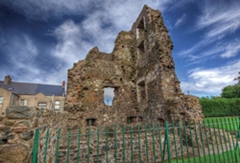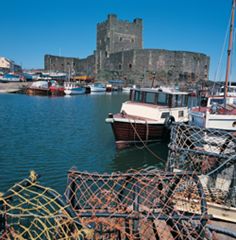Mid and East Antrim District Council preview
 Peter Cheney considers the geography, population and potential political make-up of the new local government area of Mid and East Antrim, due to be formed in 2015.
Peter Cheney considers the geography, population and potential political make-up of the new local government area of Mid and East Antrim, due to be formed in 2015.
Virtually all of Ballymena, Larne and Carrickfergus will be merged into Mid and East Antrim (one of the province’s 11 new councils) in April 2015. One exception will made for the site of Belfast High School and the surrounding streets, outside Carrickfergus, which were allocated to Antrim and Newtownabbey by the Local Government Boundaries Commissioner in 2009.
Mid and East Antrim District Council, as a name, was suggested in the Local Government Boundaries Commissioner’s final consultation in early 2009. Mid-Antrim District Council was previously proposed but was amended after objections. The DUP suggested that no community “wishes to be saddled” with “the unfortunate acronym the MAD Council” and the UUP concurred.
A second objection centred on whether the name reflected the actual area. Mid Antrim had previously existed as a parliamentary constituency but only for Ballymena and the surrounding areas. East Antrim is normally associated with Larne and Carrickfergus, and the two districts make up the bulk of that constituency.
When the seven ‘super-councils’ were mapped out under direct rule, Carrickfergus was part of the C-shaped Inner East district which wrapped around Belfast. Ballymena and Larne were both incorporated into the North East district, also including Ballymoney, Moyle and Coleraine.
Elections of ‘shadow councillors’ are due to take place in June 2014 but councillors elected in 2011 will continue to serve out their mandate until the transfer takes place.
At the 2011 Census, the area had a combined population of 135,338, distributed between the three existing council areas as follows:
• 64,044 in Ballymena (47.3 per cent);
• 39,114 in Carrickfergus (28.9 per cent); and
• 32,180 in Larne (23.8 per cent).
 As with the other councils, the seat of the new town has not yet been decided although Ballymena would appear to have the advantage as it has been a traditional base for government agencies in the north east of the province.
As with the other councils, the seat of the new town has not yet been decided although Ballymena would appear to have the advantage as it has been a traditional base for government agencies in the north east of the province.
Politically, no party has an overall majority, although the DUP is largest with 42 per cent of the popular vote across the combined area in 2011. The UUP came second with 16.8 per cent, followed by 10.9 per cent for Alliance, 8.9 per cent for the TUV, 5.9 per cent for Sinn Féin and 5.8 per cent for the SDLP.
Unlike most councils in Northern Ireland, Larne and Carrickfergus have a strong tradition of electing independents. However, those two councils have smaller turnouts (47.2 per cent in Larne and 46.2 per cent in Carrickfergus) than Ballymena (54.8 per cent). The higher turnout in Ballymena may be linked to intra-unionist rivalry, particularly as the DUP has sought to regain ground from the TUV. Alliance is also making inroads in all three areas.
Community background figures are not yet available from the 2011 Census but the breakdown in 2001 was 75 per cent Protestant, 21 per cent Catholic and 4 per cent other. As a result, nationalist parties will be keen to ensure that the Local Government Reorganisation Bill (due this autumn) includes sufficient safeguards for their community.
On a practical level, the new district’s 40 councillors will represent a reduction from the current 56 across the three areas i.e. 24 in Ballymena, 17 in Carrickfergus and 15 in Larne.
Ballymena, Larne and Carrickfergus each have borough status and therefore the entitlement to a Mayor. Prior to 1973, those boroughs covered the towns themselves while the surrounding areas consisted of the rural districts of Ballymena and Larne, and the Whitehead urban district. Councillors have been keen to keep their borough status and lobbying on this may continue through the Bill process at Stormont.





